Business
Tech billionaires seem to be doom prepping. Should we be worried?
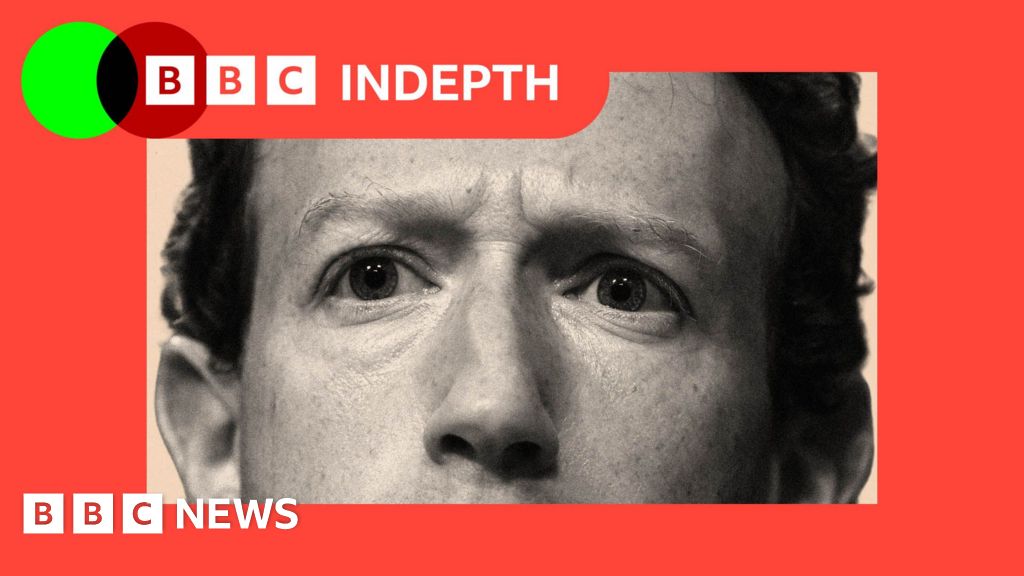
 Zoe KleinmanTechnology editor
Zoe KleinmanTechnology editor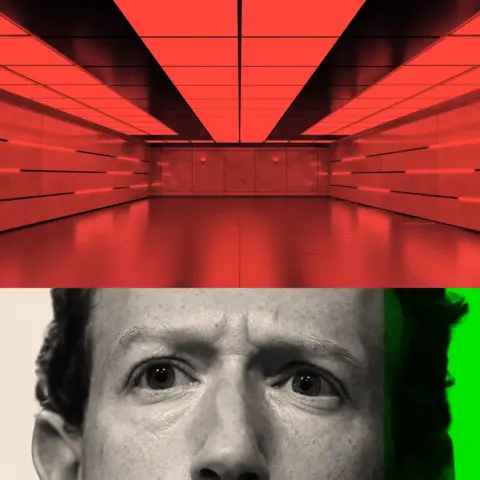 BBC
BBCMark Zuckerberg is said to have started work on Koolau Ranch, his sprawling 1,400-acre compound on the Hawaiian island of Kauai, as far back as 2014.
It is set to include a shelter, complete with its own energy and food supplies, though the carpenters and electricians working on the site were banned from talking about it by non-disclosure agreements, according to a report by Wired magazine.
A six-foot wall blocked the project from view of a nearby road.
Asked last year if he was creating a doomsday bunker, the Facebook founder gave a flat “no”. The underground space spanning some 5,000 square feet is, he explained, “just like a little shelter, it’s like a basement”.
That hasn’t stopped the speculation – likewise about his decision to buy 11 properties in the Crescent Park neighbourhood of Palo Alto in California, apparently adding a 7,000 square feet underground space beneath.
 Bloomberg via Getty Images
Bloomberg via Getty ImagesThough his building permits refer to basements, according to the New York Times, some of his neighbours call it a bunker. Or a billionaire’s bat cave.
Then there is the speculation around other tech leaders, some of whom appear to have been busy buying up chunks of land with underground spaces, ripe for conversion into multi-million pound luxury bunkers.
Reid Hoffman, the co-founder of LinkedIn, has talked about “apocalypse insurance”. This is something about half of the super-wealthy have, he has previously claimed, with New Zealand a popular destination for homes.
So, could they really be preparing for war, the effects of climate change, or some other catastrophic event the rest of us have yet to know about?
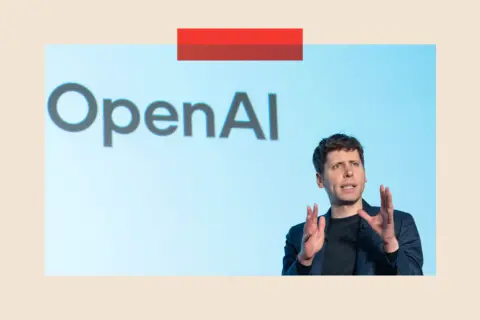 Getty Images News
Getty Images NewsIn the last few years, the advancement of artificial intelligence (AI) has only added to that list of potential existential woes. Many are deeply worried at the sheer speed of the progression.
Ilya Sutskever, chief scientist and a co-founder of Open AI, is reported to be one of them.
By mid-2023, the San Francisco-based firm had released ChatGPT – the chatbot now used by hundreds of millions of people across the world – and they were working fast on updates.
But by that summer, Mr Sutskever was becoming increasingly convinced that computer scientists were on the brink of developing artificial general intelligence (AGI) – the point at which machines match human intelligence – according to a book by journalist Karen Hao.
In a meeting, Mr Sutskever suggested to colleagues that they should dig an underground shelter for the company’s top scientists before such a powerful technology was released on the world, Ms Hao reports.
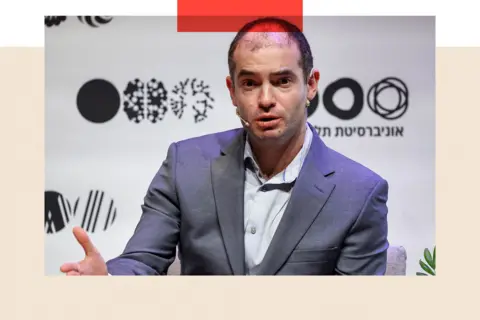 AFP via Getty Images
AFP via Getty Images“We’re definitely going to build a bunker before we release AGI,” he’s widely reported to have said, though it’s unclear who he meant by “we”.
It sheds light on a strange fact: many leading computer scientists and tech leaders, some of whom are working hard to develop a hugely intelligent form of AI, also seem deeply afraid of what it could one day do.
So when exactly – if ever – will AGI arrive? And could it really prove transformational enough to make ordinary people afraid?
An arrival ‘sooner than we think’
Tech leaders have claimed that AGI is imminent. OpenAI boss Sam Altman said in December 2024 that it will come “sooner than most people in the world think”.
Sir Demis Hassabis, the co-founder of DeepMind, has predicted in the next five to ten years, while Anthropic founder Dario Amodei wrote last year that his preferred term – “powerful AI” – could be with us as early as 2026.
Others are dubious. “They move the goalposts all the time,” says Dame Wendy Hall, professor of computer science at Southampton University. “It depends who you talk to.” We are on the phone but I can almost hear the eye-roll.
“The scientific community says AI technology is amazing,” she adds, “but it’s nowhere near human intelligence.”
There would need to be a number of “fundamental breakthroughs” first, agrees Babak Hodjat, chief technology officer of the tech firm Cognizant.
What’s more, it’s unlikely to arrive as a single moment. Rather, AI is a rapidly advancing technology, it’s on a journey and there are many companies around the world racing to develop their own versions of it.
But one reason the idea excites some in Silicon Valley is that it’s thought to be a pre-cursor to something even more advanced: ASI, or artificial super intelligence – tech that surpasses human intelligence.
It was back in 1958 that the concept of “the singularity” was attributed posthumously to Hungarian-born mathematician John von Neumann. It refers to the moment when computer intelligence advances beyond human understanding.
 Getty Images
Getty ImagesMore recently, the 2024 book Genesis, written by Eric Schmidt, Craig Mundy and the late Henry Kissinger, explores the idea of a super-powerful technology that becomes so efficient at decision-making and leadership we end up handing control to it completely.
It’s a matter of when, not if, they argue.
Money for all, without needing a job?
Those in favour of AGI and ASI are almost evangelical about its benefits. It will find new cures for deadly diseases, solve climate change and invent an inexhaustible supply of clean energy, they argue.
Elon Musk has even claimed that super-intelligent AI could usher in an era of “universal high income”.
He recently endorsed the idea that AI will become so cheap and widespread that virtually anyone will want their “own personal R2-D2 and C-3PO” (referencing the droids from Star Wars).
“Everyone will have the best medical care, food, home transport and everything else. Sustainable abundance,” he enthused.
There is a scary side, of course. Could the tech be hijacked by terrorists and used as an enormous weapon, or what if it decides for itself that humanity is the cause of the world’s problems and destroys us?
 AFP via Getty Images
AFP via Getty Images“If it’s smarter than you, then we have to keep it contained,” warned Tim Berners Lee, creator of the World Wide Web, talking to the BBC earlier this month.
“We have to be able to switch it off.”
Governments are taking some protective steps. In the US, where many leading AI companies are based, President Biden passed an executive order in 2023 that required some firms to share safety test results with the federal government – though President Trump has since revoked some of the order, calling it a “barrier” to innovation.
Meanwhile in the UK, the AI Safety Institute – a government-funded research body – was set up two years ago to better understand the risks posed by advanced AI.
And then there are those super-rich with their own apocalypse insurance plans.
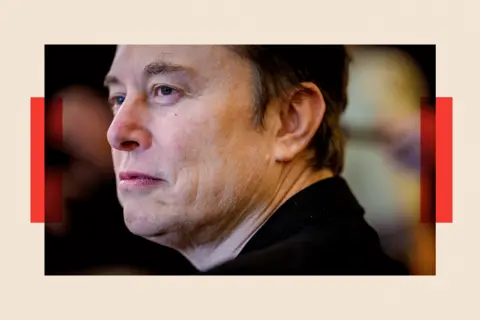 Getty Images
Getty Images“Saying you’re ‘buying a house in New Zealand’ is kind of a wink, wink, say no more,” Reid Hoffman previously said. The same presumably goes for bunkers.
But there’s a distinctly human flaw.
I once met a former bodyguard of one billionaire with his own “bunker”, who told me his security team’s first priority, if this really did happen, would be to eliminate said boss and get in the bunker themselves. And he didn’t seem to be joking.
Is it all alarmist nonsense?
Neil Lawrence is a professor of machine learning at Cambridge University. To him, this whole debate in itself is nonsense.
“The notion of Artificial General Intelligence is as absurd as the notion of an ‘Artificial General Vehicle’,” he argues.
“The right vehicle is dependent on the context. I used an Airbus A350 to fly to Kenya, I use a car to get to the university each day, I walk to the cafeteria… There’s no vehicle that could ever do all of this.”
For him, talk about AGI is a distraction.
“The technology we have [already] built allows, for the first time, normal people to directly talk to a machine and potentially have it do what they intend. That is absolutely extraordinary… and utterly transformational.
“The big worry is that we’re so drawn in to big tech’s narratives about AGI that we’re missing the ways in which we need to make things better for people.”
 Getty Images
Getty ImagesCurrent AI tools are trained on mountains of data and are good at spotting patterns: whether tumour signs in scans or the word most likely to come after another in a particular sequence. But they do not “feel”, however convincing their responses may appear.
“There are some ‘cheaty’ ways to make a Large Language Model (the foundation of AI chatbots) act as if it has memory and learns, but these are unsatisfying and quite inferior to humans,” says Mr Hodjat.
Vince Lynch, CEO of the California-based IV.AI, is also wary of overblown declarations about AGI.
“It’s great marketing,” he says “If you are the company that’s building the smartest thing that’s ever existed, people are going to want to give you money.”
He adds, “It’s not a two-years-away thing. It requires so much compute, so much human creativity, so much trial and error.”
 Getty Images
Getty ImagesAsked whether he believes AGI will ever materialise, there’s a long pause.
“I really don’t know.”
Intelligence without consciousness
In some ways, AI has already taken the edge over human brains. A generative AI tool can be an expert in medieval history one minute and solve complex mathematical equations the next.
Some tech companies say they don’t always know why their products respond the way they do. Meta says there are some signs of its AI systems improving themselves.
Ultimately, though, no matter how intelligent machines become, biologically the human brain still wins. It has about 86 billion neurons and 600 trillion synapses, many more than the artificial equivalents.
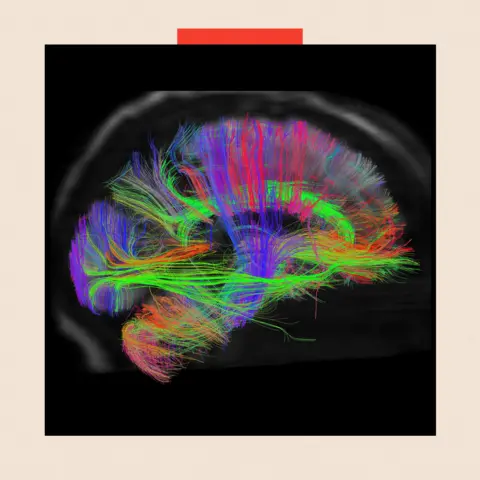
The brain doesn’t need to pause between interactions either, and it is constantly adapting to new information.
“If you tell a human that life has been found on an exoplanet, they will immediately learn that, and it will affect their world view going forward. For an LLM [Large Language Model], they will only know that as long as you keep repeating this to them as a fact,” says Mr Hodjat.
“LLMs also do not have meta-cognition, which means they don’t quite know what they know. Humans seem to have an introspective capacity, sometimes referred to as consciousness, that allows them to know what they know.”
It is a fundamental part of human intelligence – and one that is yet to be replicated in a lab.
Top picture credits: The Washington Post via Getty Images/ Getty Images MASTER. Lead image shows Mark Zuckerberg and a stock image of a bunker in an unknown location
BBC InDepth is the home on the website and app for the best analysis, with fresh perspectives that challenge assumptions and deep reporting on the biggest issues of the day. And we showcase thought-provoking content from across BBC Sounds and iPlayer too. You can sign up for notifications that will alert you when a BBC InDepth story is published – find out how to sign up here.
Business
Stock Market Live Updates: Sensex, Nifty Hit Record Highs; Bank Nifty Climbs 60,000 For The First Time

Stock Market News Live Updates: Indian equity benchmarks opened with a strong gap-up on Monday, December 1, touching fresh record highs, buoyed by a sharp acceleration in Q2FY26 GDP growth to a six-quarter peak of 8.2%. Positive cues from Asian markets further lifted investor sentiment.
The BSE Sensex was trading at 85,994, up 288 points or 0.34%, after touching an all-time high of 86,159 in early deals. The Nifty 50 stood at 26,290, higher by 87 points or 0.33%, after scaling a record intraday high of 26,325.8.
Broader markets also saw gains, with the Midcap index rising 0.27% and the Smallcap index advancing 0.52%.
On the sectoral front, the Nifty Bank hit a historic milestone by crossing the 60,000 mark for the first time, gaining 0.4% to touch a fresh peak of 60,114.05.
Meanwhile, the Metal and PSU Bank indices climbed 0.8% each in early trade.
Global cues
Asia-Pacific markets were mostly lower on Monday as traders assessed fresh Chinese manufacturing data and increasingly priced in the likelihood of a US Federal Reserve rate cut later this month.
According to the CME FedWatch Tool, markets are now assigning an 87.4 per cent probability to a rate cut at the Fed’s December 10 meeting.
China’s factory activity unexpectedly slipped back into contraction in November, with the RatingDog China General Manufacturing PMI by S&P Global easing to 49.9, below expectations of 50.5, as weak domestic demand persisted.
Japan’s Nikkei 225 slipped 1.6 per cent, while the broader Topix declined 0.86 per cent. In South Korea, the Kospi dropped 0.30 per cent and Australia’s S&P/ASX 200 was down 0.31 per cent.
US stock futures were steady in early Asian trade after a positive week on Wall Street. On Friday, in a shortened post-Thanksgiving session, the Nasdaq Composite climbed 0.65 per cent to 23,365.69, its fifth consecutive day of gains.
The S&P 500 rose 0.54 per cent to 6,849.09, while the Dow Jones Industrial Average added 289.30 points, or 0.61 per cent, to close at 47,716.42.
Business
South Korea: Online retail giant Coupang hit by massive data leak

Osmond ChiaBusiness reporter
 Getty Images
Getty ImagesSouth Korea’s largest online retailer, Coupang, has apologised for a massive data breach potentially involving nearly 34 million local customer accounts.
The country’s internet authority said that it is investigating the breach and that details from the millions of accounts have likely been exposed.
Coupang is often described as South Korea’s equivalent of Amazon.com. The breach marks the latest in a series of data leaks at major firms in the country, including its telecommunications giant, SK Telecom.
Coupang told the BBC it became aware of the unauthorised access of personal data of about 4,500 customer accounts on 18 November and immediately reported it to the authorities.
But later checks found that some 33.7 million customer accounts – all in South Korea – were likely exposed, said Coupang, adding that the breach is believed to have begun as early as June through a server based overseas.
The exposed data is limited to name, email address, phone number, shipping address and some order histories, Coupang said.
No credit card information or login credentials were leaked. Those details remain securely protected and no action is required from Coupang users at this point, the firm added.
The number of accounts affected by the incident represents more than half of South Korea’s roughly-52 million population.
Coupang, which is founded in South Korea and headquartered in the US, said recently that it had nearly 25 million active users.
Coupang apologised to its customers and warned them to stay alert to scams impersonating the company.
The firm did not give details on who is behind the breach.
South Korean media outlets reported on Sunday that a former Coupang employee from China was suspected of being behind the breach.
The authorities are assessing the scale of the breach as well as whether Coupang had broken any data protection safety rules, South Korea’s Ministry of Science and ICT said in a statement.
“As the breach involves the contact details and addresses of a large number of citizens, the Commission plans to conduct a swift investigation and impose strict sanctions if it finds a violation of the duty to implement safety measures under the Protection Act.”
The incident marks the latest in a series of breaches affecting major South Korean companies this year, despite the country’s reputation for stringent data privacy rules.
SK Telecom, South Korea’s largest mobile operator, was fined nearly $100m (£76m) over a data breach involving more than 20 million subscribers.
In September, Lotte Cards also said the data of nearly three million customers was leaked after a cyber-attack on the credit card firm.
Business
Agency workers covering for Birmingham bin strikers to join picket lines

Agency workers hired to cover Birmingham bin strikers will join them on picket lines on Monday, a union has said.
A rally will be held by Unite The Union at Smithfield Depot on Pershore Street, Birmingham, on Monday morning to mark the first day of strike action by agency refuse workers.
Unite said the Job & Talent agency workers had voted in favour of strike action “over bullying, harassment and the threat of blacklisting at the council’s refuse department two weeks ago”.
The union said the number of agency workers who will join the strike action is “growing daily”.
Strikes by directly-employed bin workers, which have been running since January, could continue beyond May’s local elections.
The directly-employed bin workers voted in favour of extending their industrial action mandate earlier this month.
Unite general secretary Sharon Graham said: “Birmingham council will only resolve this dispute when it stops the appalling treatment of its workforce.
“Agency workers have now joined with directly-employed staff to stand up against the massive injustices done to them.
“Instead of wasting millions more of council taxpayers’ money fighting a dispute it could settle justly for a fraction of the cost, the council needs to return to talks with Unite and put forward a fair deal for all bin workers.
“Strikes will not end until it does.”
-

 Sports1 week ago
Sports1 week agoWATCH: Ronaldo scores spectacular bicycle kick
-

 Entertainment7 days ago
Entertainment7 days agoWelcome to Derry’ episode 5 delivers shocking twist
-

 Politics1 week ago
Politics1 week agoWashington and Kyiv Stress Any Peace Deal Must Fully Respect Ukraine’s Sovereignty
-

 Business1 week ago
Business1 week agoKey economic data and trends that will shape Rachel Reeves’ Budget
-

 Tech6 days ago
Tech6 days agoWake Up—the Best Black Friday Mattress Sales Are Here
-

 Fashion7 days ago
Fashion7 days agoCanada’s Lululemon unveils team Canada kit for Milano Cortina 2026
-

 Politics1 week ago
Politics1 week ago53,000 Sikhs vote in Ottawa Khalistan Referendum amid Carney-Modi trade talks scrutiny
-

 Tech5 days ago
Tech5 days agoThe Alienware Aurora Gaming Desktop Punches Above Its Weight






